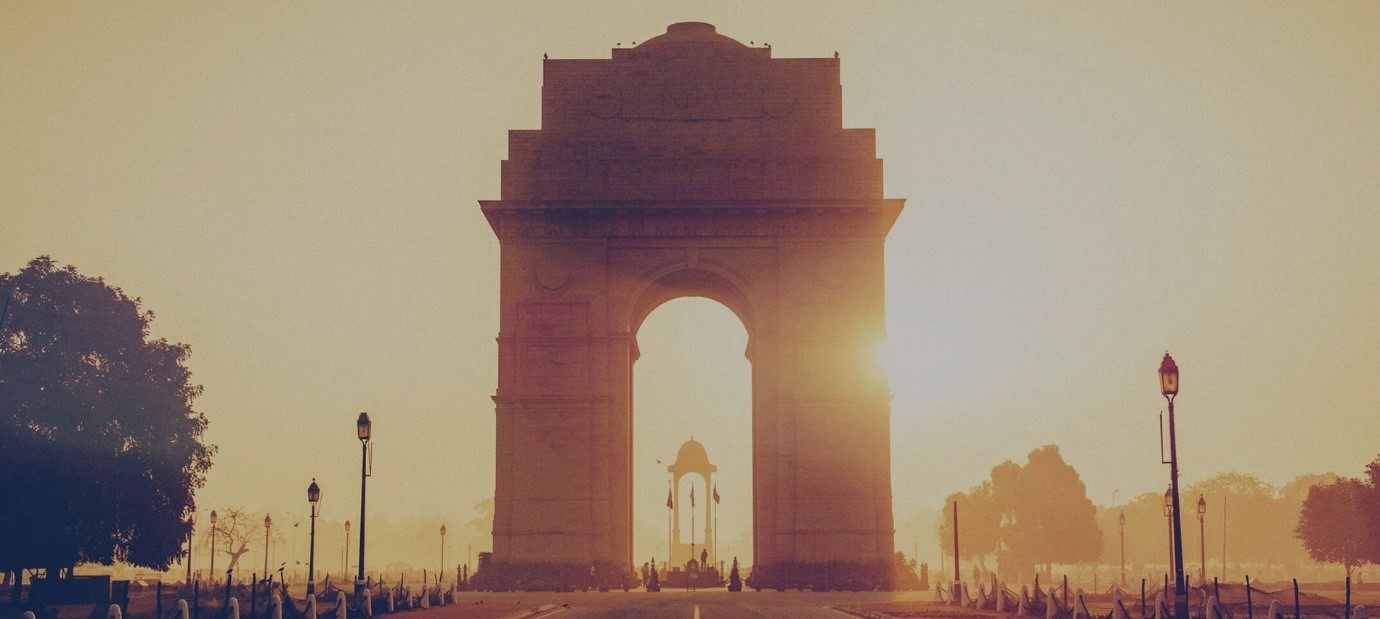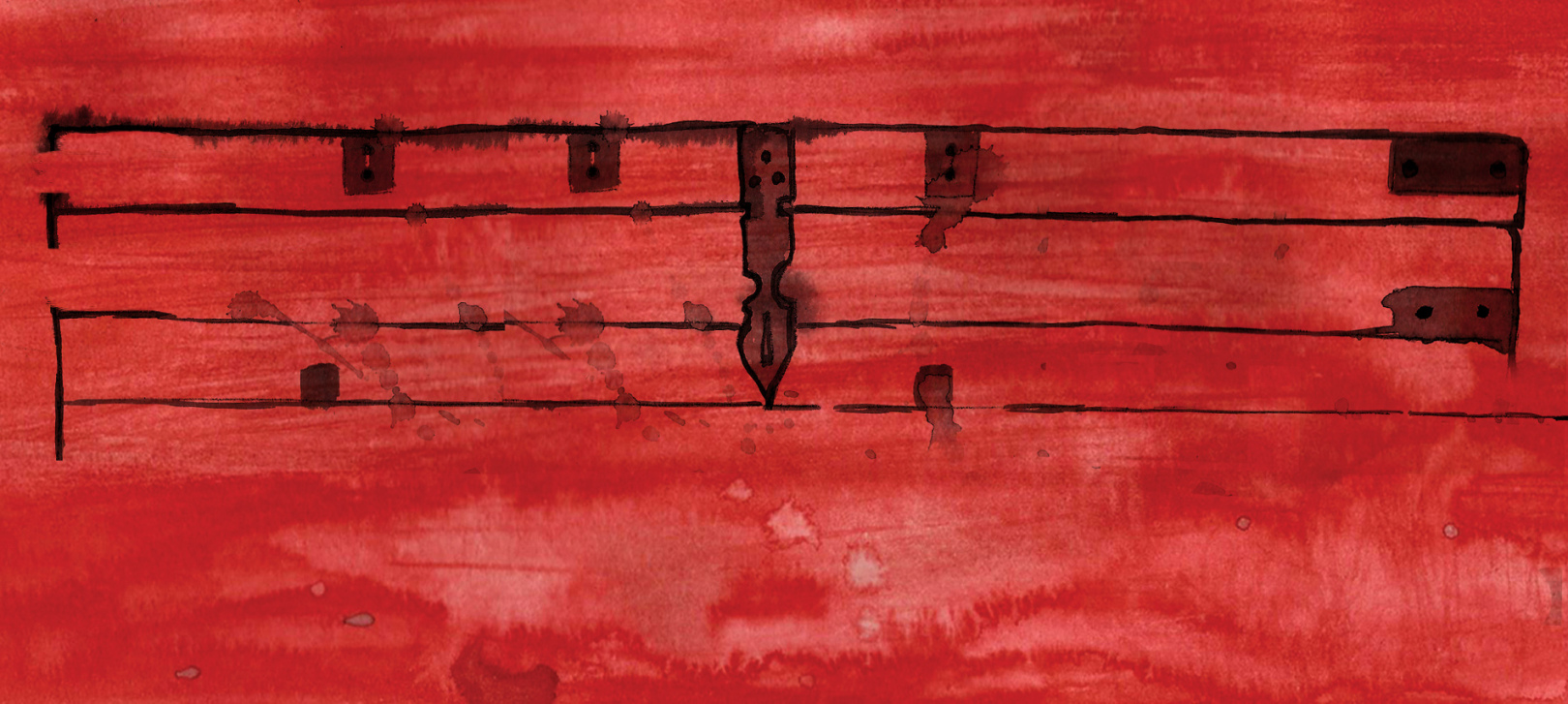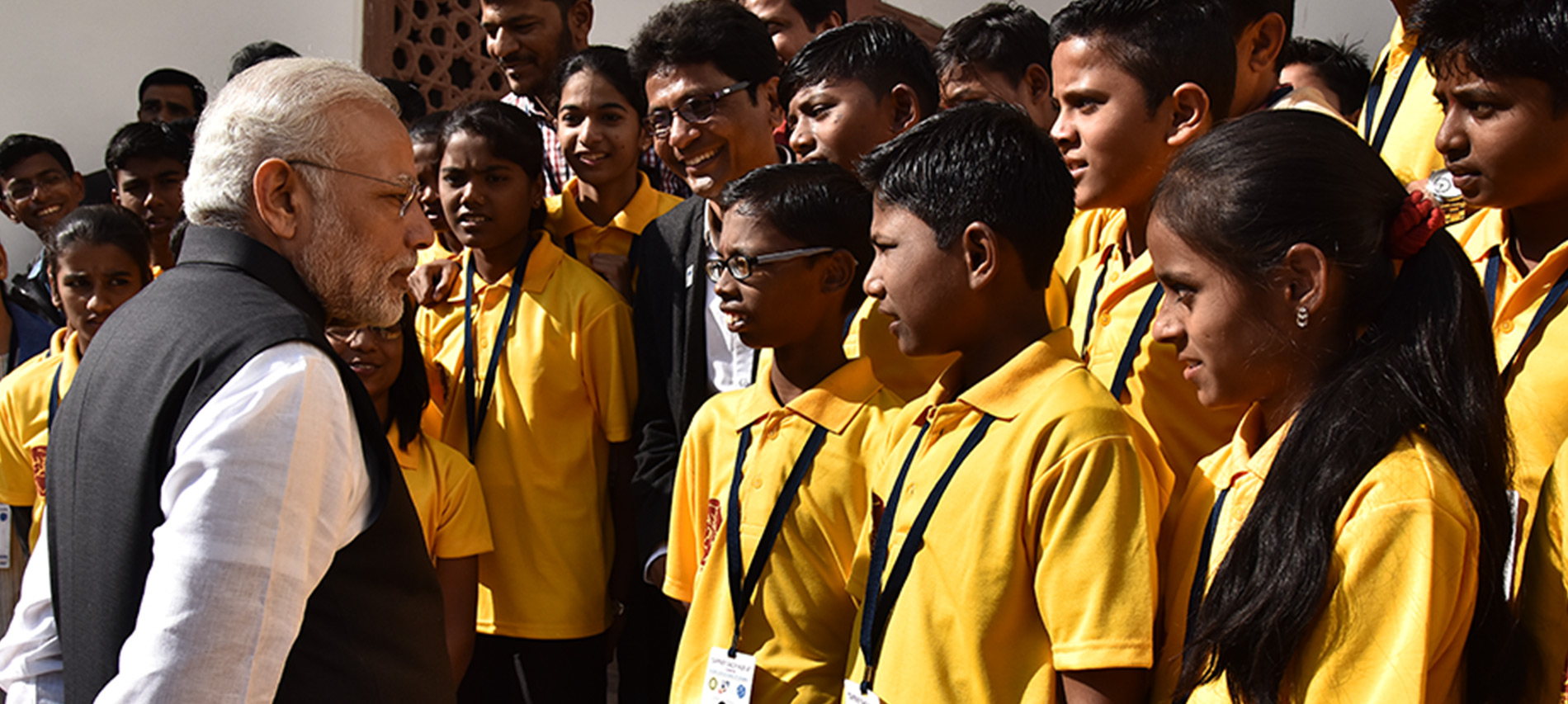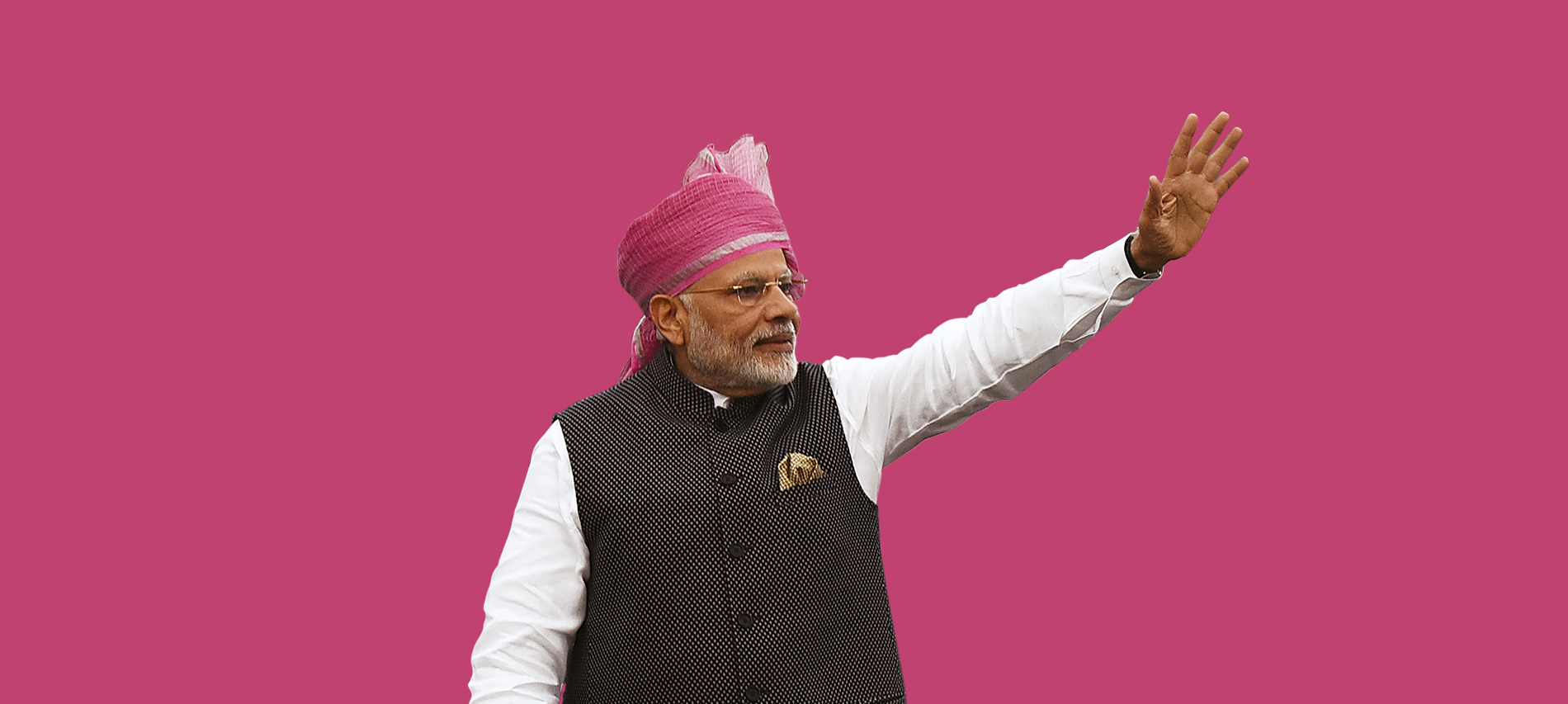The history of independent India changed forever on the night of June 25, 1975, as then Prime Minister, Indira Gandhi, declared a state of Emergency to be imposed on the nation for a period of 21 months.
What acted as the catalyst to this infamous moment in Indian history was the watershed case of Indira Gandhi vs Raj Narain, which has been documented in detail by advocate Prashant Bhushan in his book The Case that Shook India.
Taking a peek into the book, here are five facts from The Case that Shook India that take us back in time to witness the most riveting courtroom drama in Indian history from front row seats.
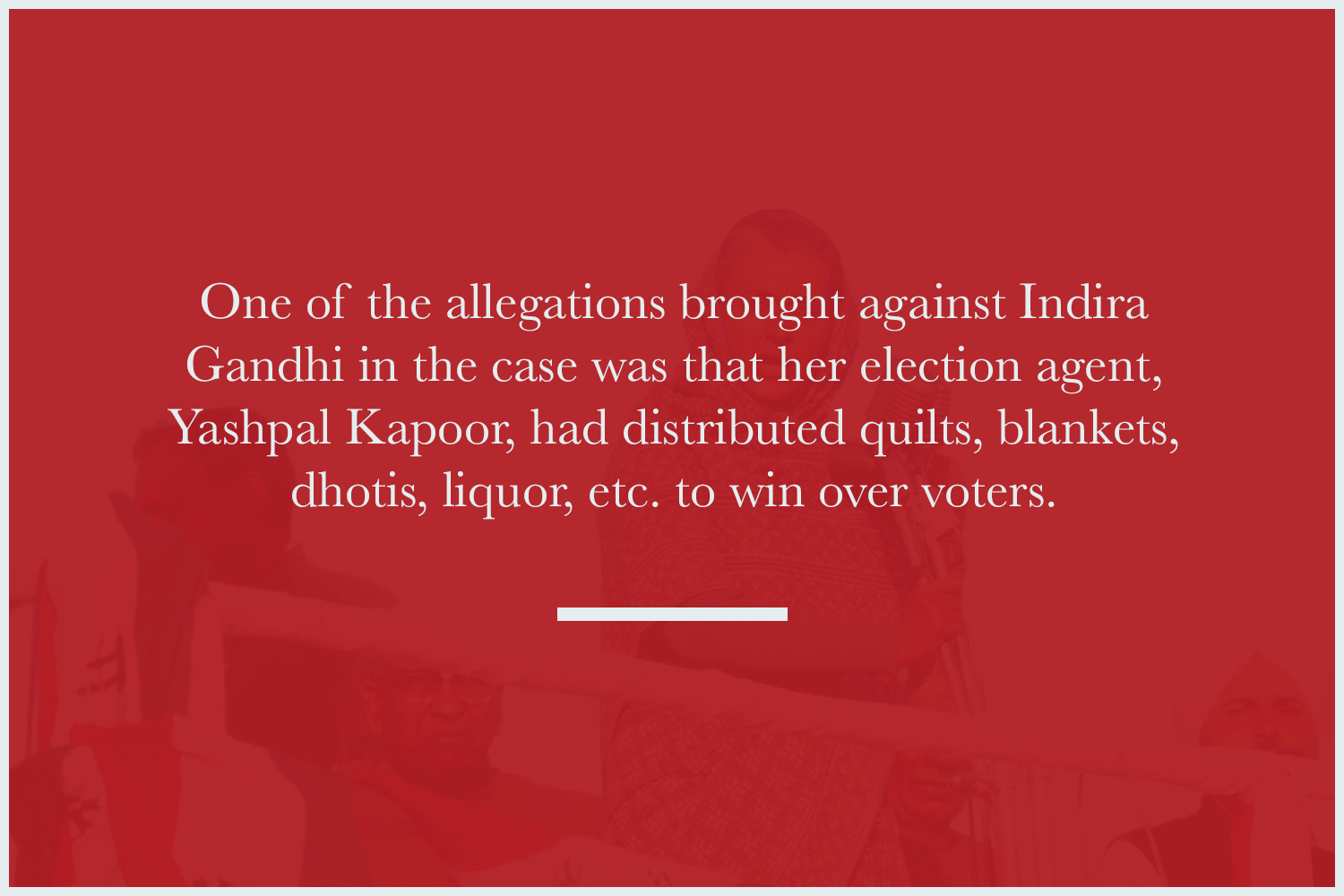
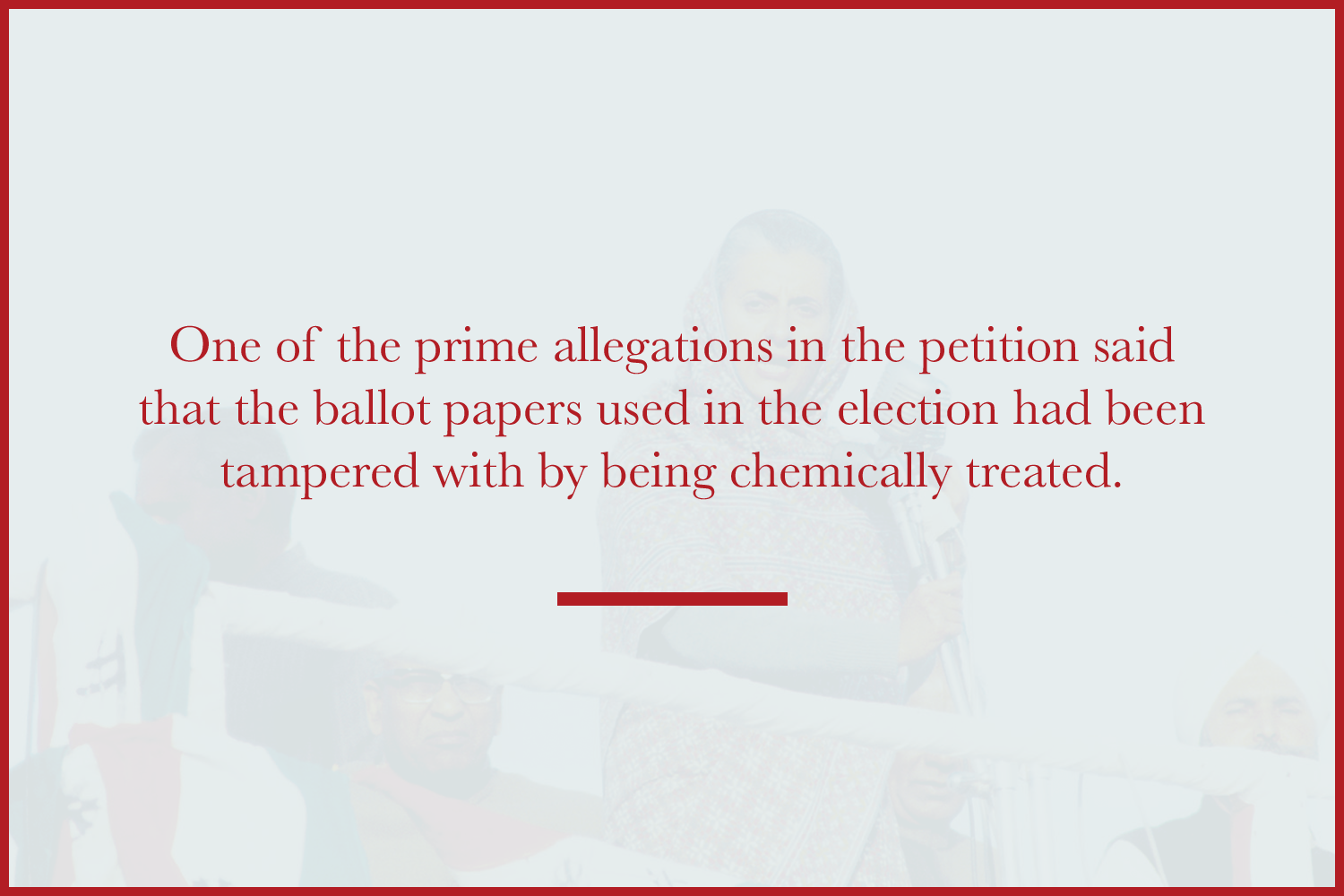
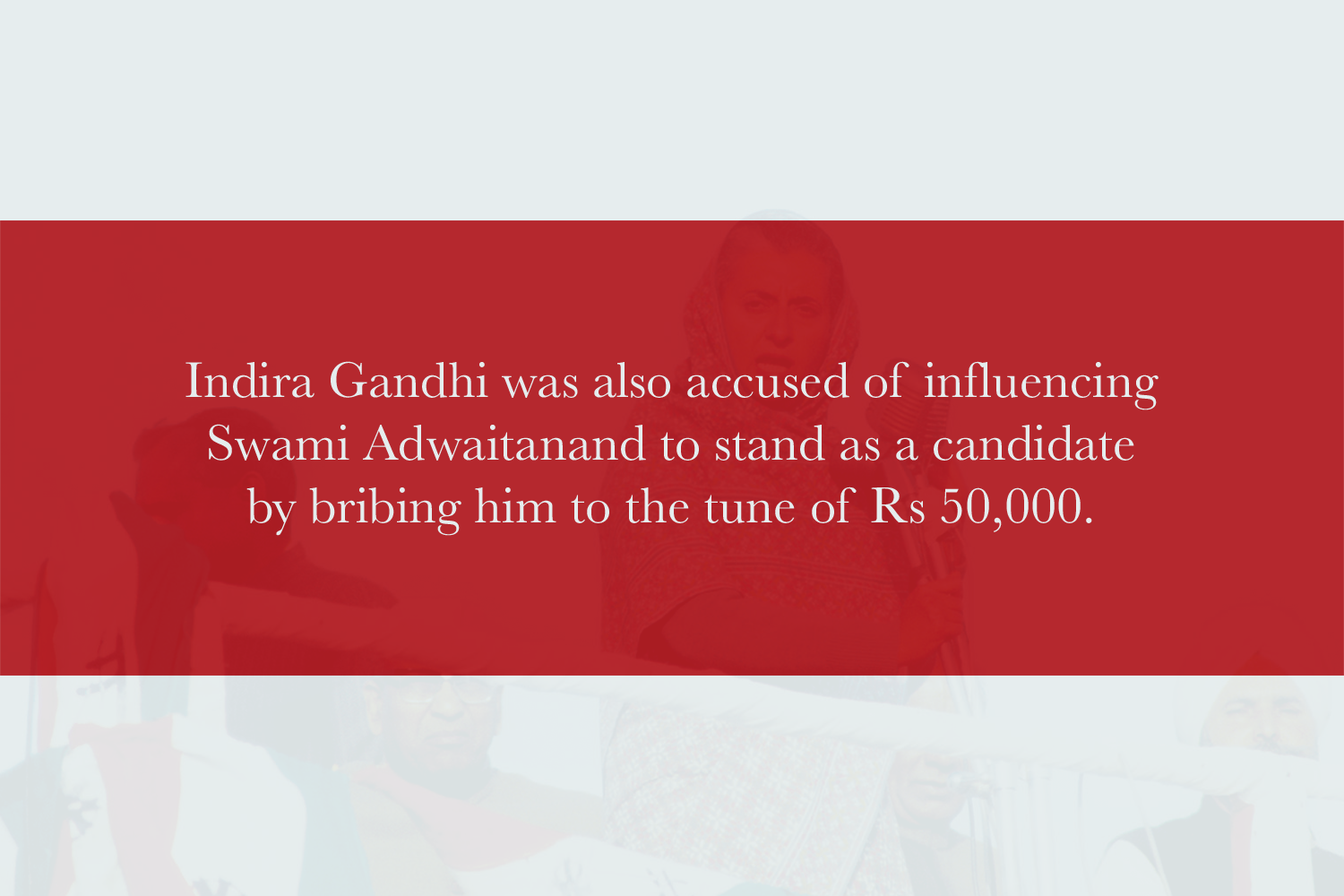
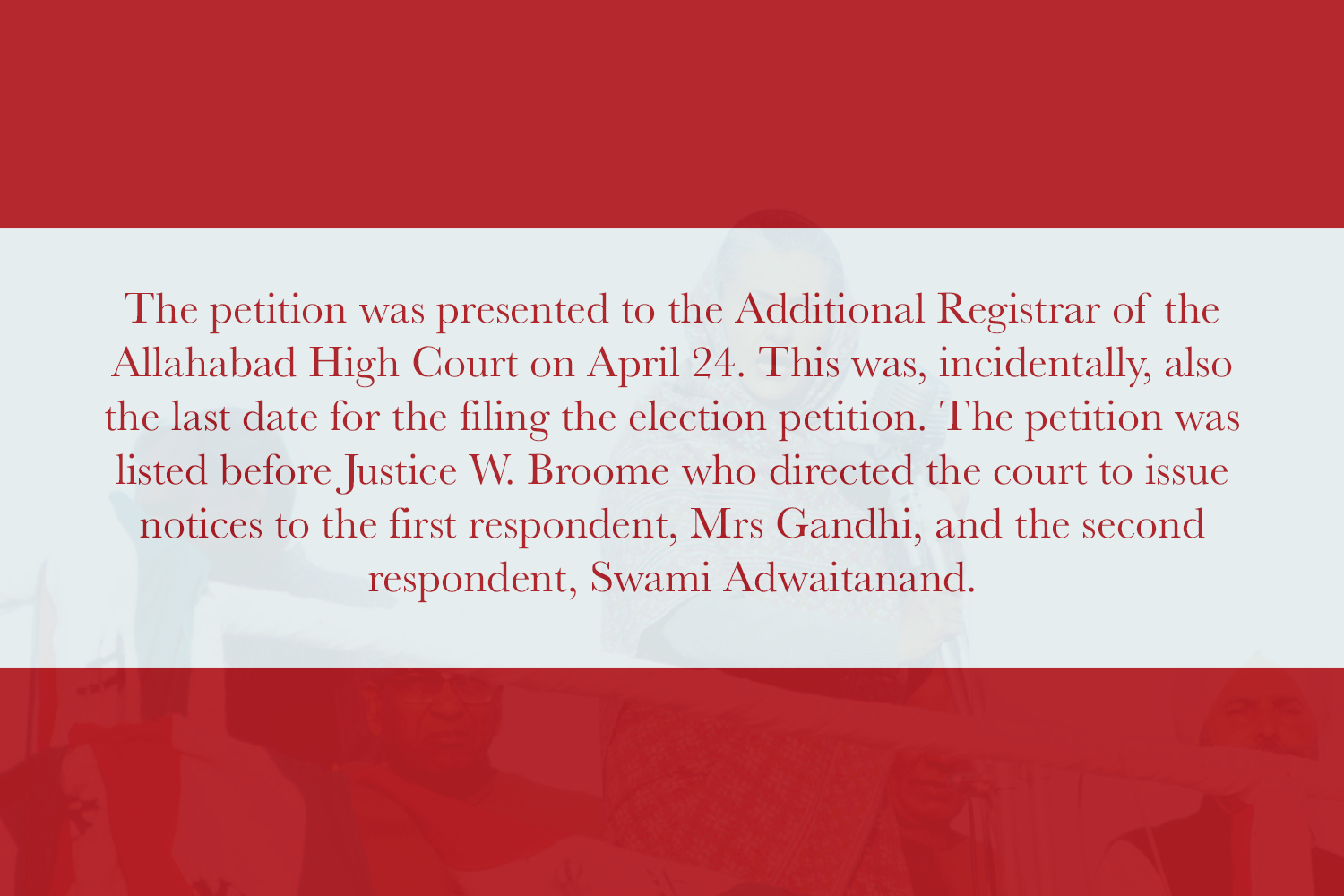
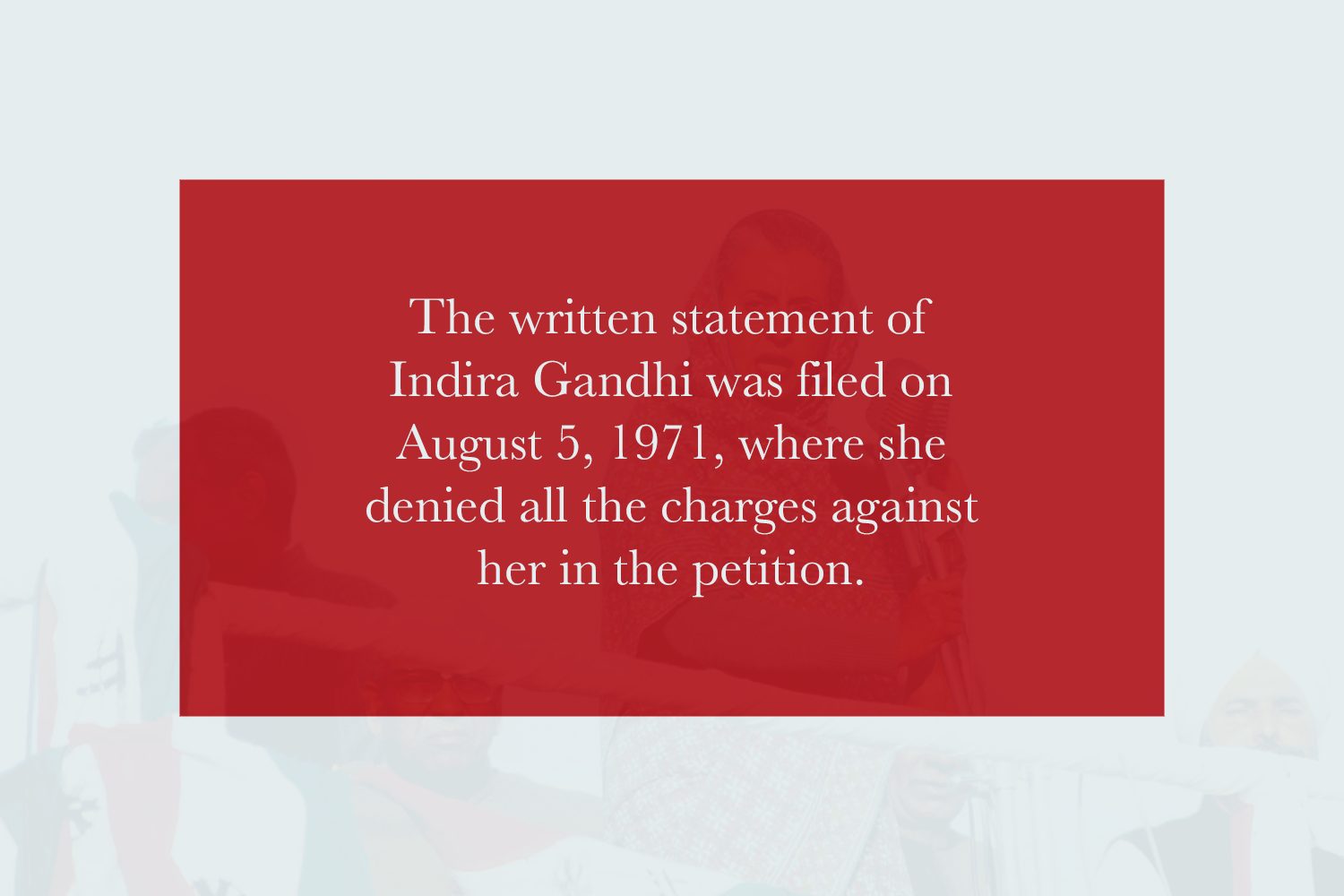
The Emergency finally concluded on March 21, 1977, thereby ending a period of not just political controversies, but heavy censorship, suspension of civil liberties and personal freedoms. Read more about it in Prashant Bhushan’s The Case that Shook India.
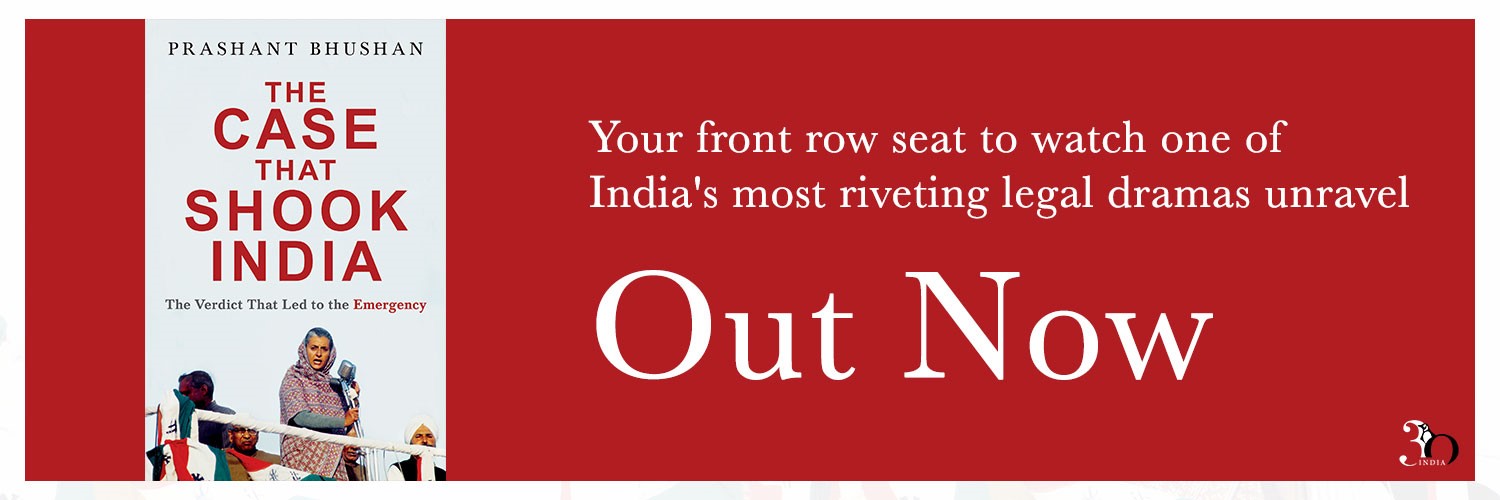
Tag: Indian Politics
Trump and Modi: Strangely Silent on the US-India Nuclear Deal
By Larry Pressler
Larry Pressler was the chairman of the US Senate’s Arms Control Subcommittee and advocated the now-famous Pressler Amendment. His book Neighbours In Arms provides a comprehensive account of how US foreign policy in the subcontinent was formed from 1974 till today and ends with recommendations of a new US-India alliance that could be a model for American allies in future.
Here’s a piece written by him on the US-India nuclear deal.
When I first visited India in 1965, I was enthralled by the people, the food, the heat and the colours. The plight of its poor moved me. As a graduate student in the Rhodes Scholar programme at Oxford University in England, I was looking for material to complete a doctorate in philosophy and made a brief visit to New Delhi. There, I spent three to four days during a term break in December.
On a low budget, I travelled by rail. The trains were crowded and the passengers were noisy and boisterous. It was such a contrast to the quiet and subdued cross-country train rides in the United States. I ate whatever my modest budget allowed, and remember enjoying my first taste of idli in southern India. Enveloped by the country’s spirit, I found the whole experience exhilarating.
But I also witnessed the long-term impact of foreign occupation and the devastating effects on its poverty-stricken people. I later saw the same negative impact of long-term foreign intervention in Vietnam. In India, there didn’t seem to be as strong a sense of national pride as I have witnessed in many other countries. At the time, I blamed it on colonialism. But, fifty years later, I also wonder if extreme poverty, corruption and the burden of the old caste system play a large role as well. Of course, the country’s lack of reliable electricity also keeps the population in a type of permanent Dark Ages—pun intended.
Consequently, I was highly encouraged when I learnt that, along with members of the US Congress, President George W. Bush and Prime Minister Manmohan Singh had agreed in July 2005 to a nuclear deal to bring electricity to the mass population. The US–India nuclear agreement would allow the United States to supply India with nuclear fuel for civilian power generators. In exchange, India agreed to institute international safeguards on its nuclear reactors to prevent them from being used for military purposes. The negotiations, surprisingly, had been conducted in almost total secrecy. Highly controversial, the agreement ended the United States’ three-decade ban on nuclear trade of any kind with India without requiring the country to join the Nuclear Non-Proliferation Treaty (NPT) or to dismantle its nuclear weapons programme.
An idealist, especially in the field of international development, might look at this deal as a great victory for the people of India, as the mass population would finally get reliable and clean electricity. In a country where 300 million of its citizens have no electricity and millions more have unreliable electricity, the US–India nuclear agreement—if implemented—could significantly improve the quality of life for more than a billion people.
To development specialists, the US–India nuclear agreement could be a godsend. Nearly 30 per cent of India’s population lives below the poverty line and 75 per cent earns less than 5000 rupees per month. The residents of the state of Bihar are among the most impoverished people in the world, with more than 70 per cent of its population suffering in extreme poverty. An ample and reliable supply of electricity will increase productivity in states like Bihar. More light in homes and in workplaces results in greater activity. This increased productivity will lift up those living in the most abject poverty in India. That is what proponents of the nuclear agreement must state as its main objective. It is a worthy humanitarian goal. But, thus far, the architects of this deal and its advocates have failed to reinforce it.
My love for India and its people is heartfelt. That is why I am so passionate about the transformative effects nuclear power can have on its citizens. If properly implemented, the US–India nuclear agreement could bring electricity, an improvement in the standard of living, and some level of dignity for many poor Indians. The poor are the ones who need the nuclear agreement the most, but so far this deal has just been a shuffling of millions of dollars between governments, arms dealers, consulting firms and lobbyists. Almost a decade after the deal was approved, not one nuclear power plant has even started construction.
Why hasn’t this happened? Importantly absent from the deal was a requirement forcing India to join the NPT and adhere to all its requirements. The Nuclear Non-Proliferation Treaty, enacted in 1970, extracted a bargain between nuclear weapons states and non-nuclear weapons states. Nuclear weapons states promised to use their nuclear capability only for peaceful purposes in exchange for a promise from non-nuclear weapons states not to pursue nuclear weapons in any form. The US–India nuclear agreement essentially gave India a waiver from the NPT, in an attempt to build a closer relationship with India and counter the rising threat of its powerful neighbour, China. This has antagonized many nuclear non-proliferation advocates, who see this move as a type of ‘nuclear double standard’. Many foreign policy experts claim that the special exemptions the US is giving India have done irreparable damage to global non-proliferation efforts. I tend to agree that we have executed an ‘about face’ on non-proliferation, but I believe it is necessary to get nuclear power for the Indian people.
It took nearly three years for both countries to approve the final agreement, which was signed by the then Indian external affairs minister, Pranab Mukherjee, and his counterpart, the then secretary of state, Condoleezza Rice, on 10 October 2008. Since it is not a treaty and merely an exchange of statements, we must accept the fact that it is not enforceable. Both sides are depending on the goodwill of the other for implementation. The publicly stated purpose of the agreement is to build nuclear plants in India to supply electricity to the country. In actuality, the United States’ primary goal with this deal was, selfishly, an economic one. The US–India nuclear agreement was primarily an arms trade deal. While it certainly was intended to allow nuclear suppliers entry into India, it also opened up vast new trade opportunities between the United States and India for many other industries. So far, the defence industry is the only industry that has enjoyed significant gains from the nuclear deal. This was not a quid pro quo, but the deal did open the doors wide for significantly more arms deals, notably C-130 and C-17 transport aircraft, and joint military exercises with India. This deal is simply a pathway to justify an escalation in arms sales between the two countries. Indeed, Stephen Cohen, a Senior Fellow from the Brookings Institute and an India expert, said that India will be ‘one of the largest markets for defense equipment in the coming two decades’.
President Obama continued the trend started by President Bush and further opened up arms trade between our two countries. In 2009, the Boeing Company won a contract for a $2-billion order for P-3 Orion maritime reconnaissance aircraft. Lockheed Martin secured a $1-billion contract for more C-130 transport aircraft. In 2010, President Obama pledged $5 billion of military equipment to India, making the US one of India’s top three military suppliers. Further efforts were made to loosen antiquated restrictions on technology transfer and to relieve onerous oversight controls. In 2013, the then secretary of defense, Ashton Carter, announced that India would be admitted into the coveted ‘Group of Eight’, the US allies that share the most sensitive technology details—without any export controls.
In 2014, analysts from the military trade publication Jane’s Defense said that India had become the largest foreign buyer of US weapons (only to be outbought by the Saudis in 2015). In 2015, President Obama and Prime Minister Modi announced new partnerships between our countries to jointly develop military jet engine technology and aircraft carrier design. President Obama said publicly that forging deeper ties between our two nations was a primary foreign policy objective for his administration. What he did not say is that these deep ties are mostly military ones. My nation’s new president, Donald Trump, seems poised to build on and reinforce this military relationship and take an even stronger stance against India’s rival, the rogue nation of Pakistan. Indeed, when Prime Minister Modi visited Washington in June of this year, the Trump Administration announced the approval of a $2 billion sale of unarmed drones to India, which raised the hairs on the necks of the Pakistani military and ISI. He also has appointed Lisa Curtis to be the Senior Director for South and Central Asia at the National Security Council. She is a veteran foreign policy expert who has recommended a much more punitive approach to Pakistan. And President Trump has made no apologies for his hard line against Muslim terrorists. Sadly, however, during Prime Minister Modi’s recent visit to Washington, there was no mention of the construction of any nuclear power plants. Their conversation (at least publicly) was strangely silent on this topic.
The US–India nuclear agreement was a good first step towards making India a key global ally. However, the deal has not even begun to achieve its full potential. I fear it never will.

How DMK changed the politics of Tamil Nadu under Annadurai
Conjeevaram Natarajan Annadurai, or Anna (elder brother), as he is affectionately called by his followers, became the Chief Minister of Tamil Nadu at the age of 58. This was the first electoral success for his party, Dravida Munnetra Kazhagam (DMK) and it marked the pinnacle of his political life.
R. Kannan’s biography Anna: The Life and Times of C. N. Annadurai sheds light on how DMK, under Anna’s glorious regime, changed the politics of Tamil Nadu forever.
Here are a few instances from R. Kannan’s book that show us how C. N. Annadurai became ‘Anna’:
The birth of Dravidian politics in Tamil Nadu — a defining moment in Indian political history

The foundation stone for DMK is laid on definitive lines of social justice and reform

Clear guidelines were laid for the principles on which DMK was to work in the days to come

A holistic approach, inclusive of minorities and issues of importance, was adopted by Anna’s party since the beginning

The party was in support of indigenous industries which always faced the peril of extinction

The life and times of the political stalwart have been beautifully captured in the words of writer R. Kannan in his biography, Anna: The Life and Times of C. N. Annadurai. Get your copy today!
5 Books You Must Read in Remembrance of the Partition
The pain of partition accompanied the joy of freedom for India. Even after seventy years, the horrors of violence still haunt the two countries.
The Remembering Partition Box Set is a collection of five iconic books which look at the different faces of partition, from the larger political and historical view to the very personal tales of hatred, grief, courage and friendship.
Here are the five books that commemorates one of the most defining moments of our history.
Train to Pakistan by Khushwant Singh
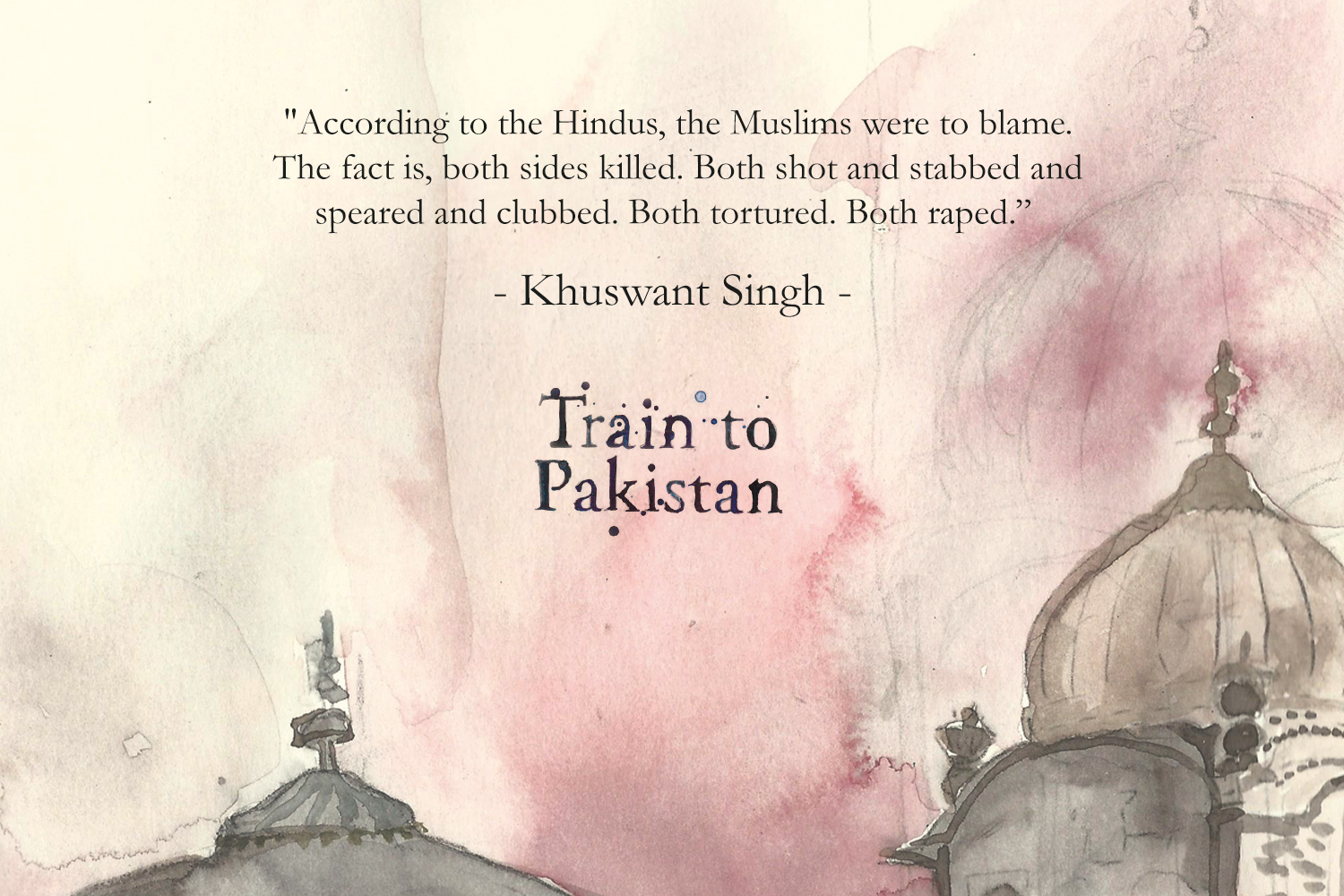
Ice-Candy-Man by Bapsi Sidhwa
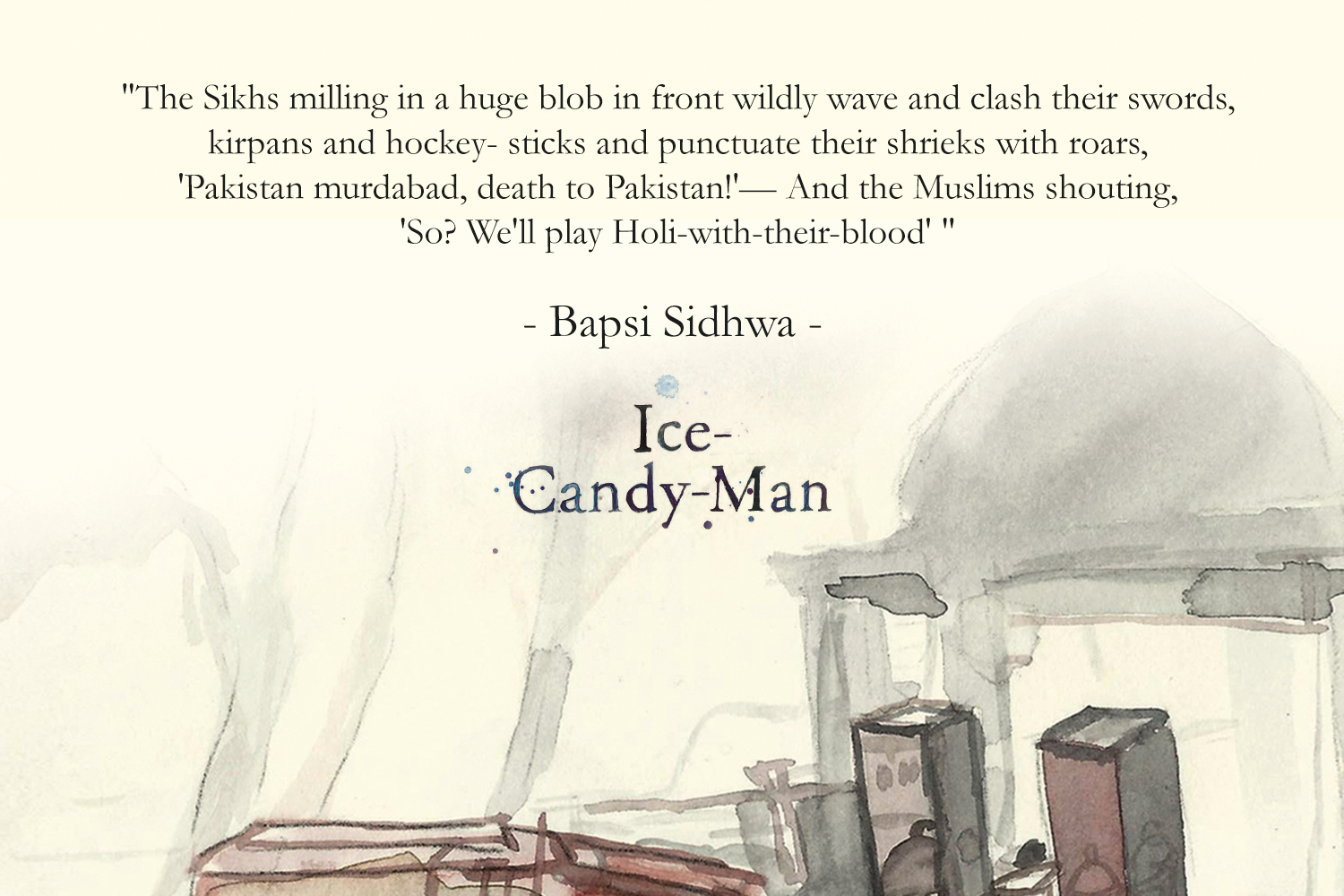
This Is Not That Dawn by Yashpal
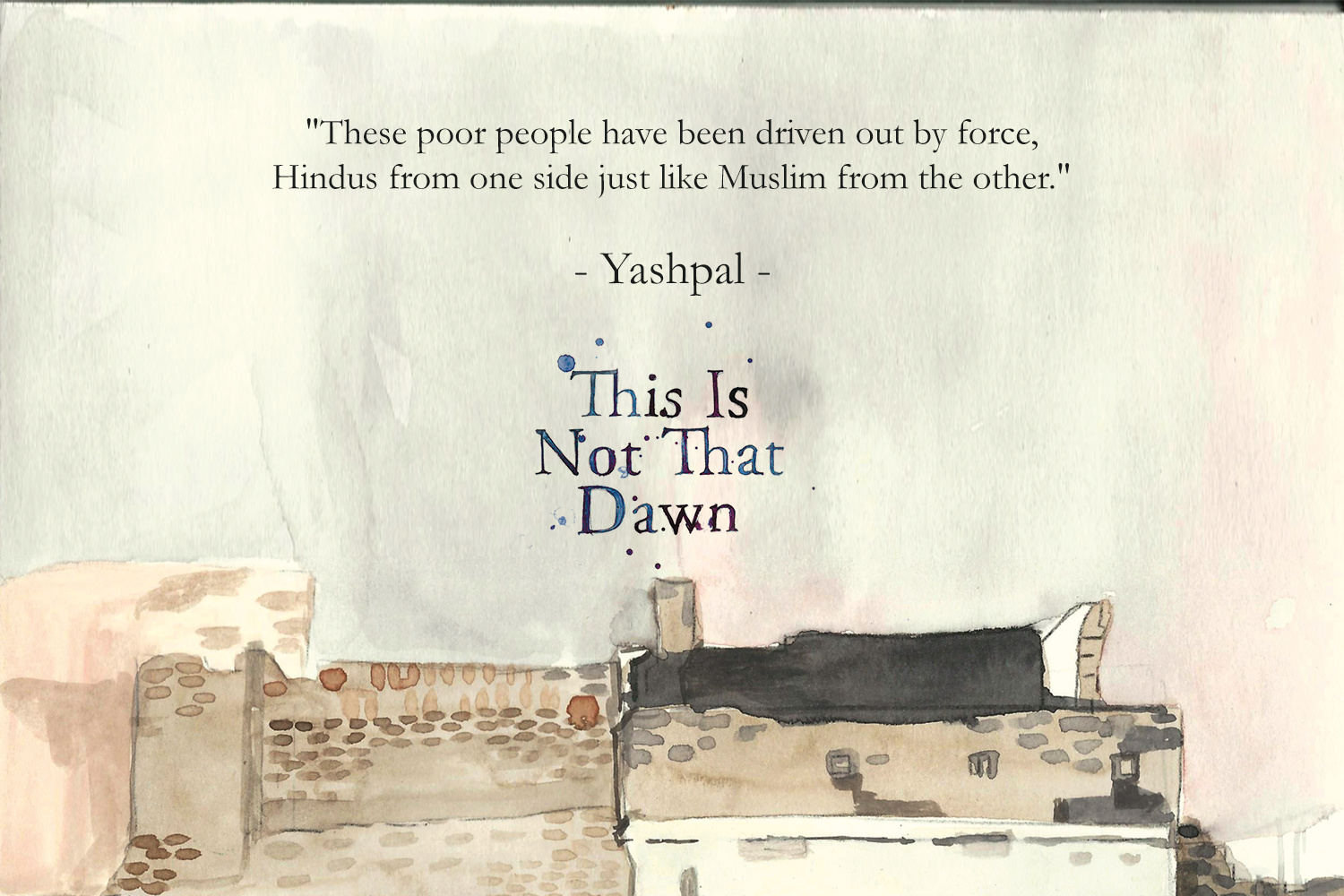
The Great Partition by Yasmin Khan
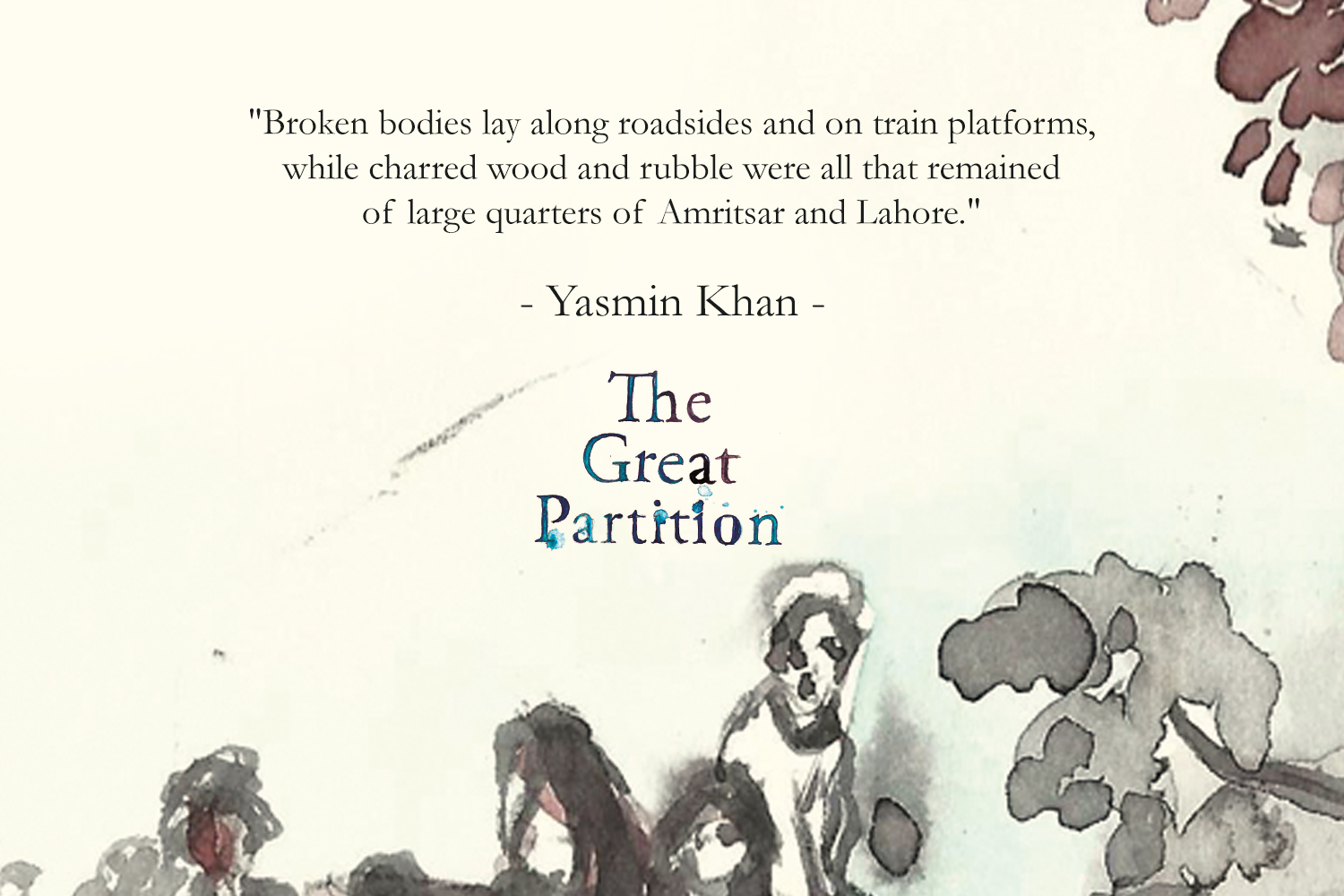
In Freedom’s Shade by Anis Kidwai
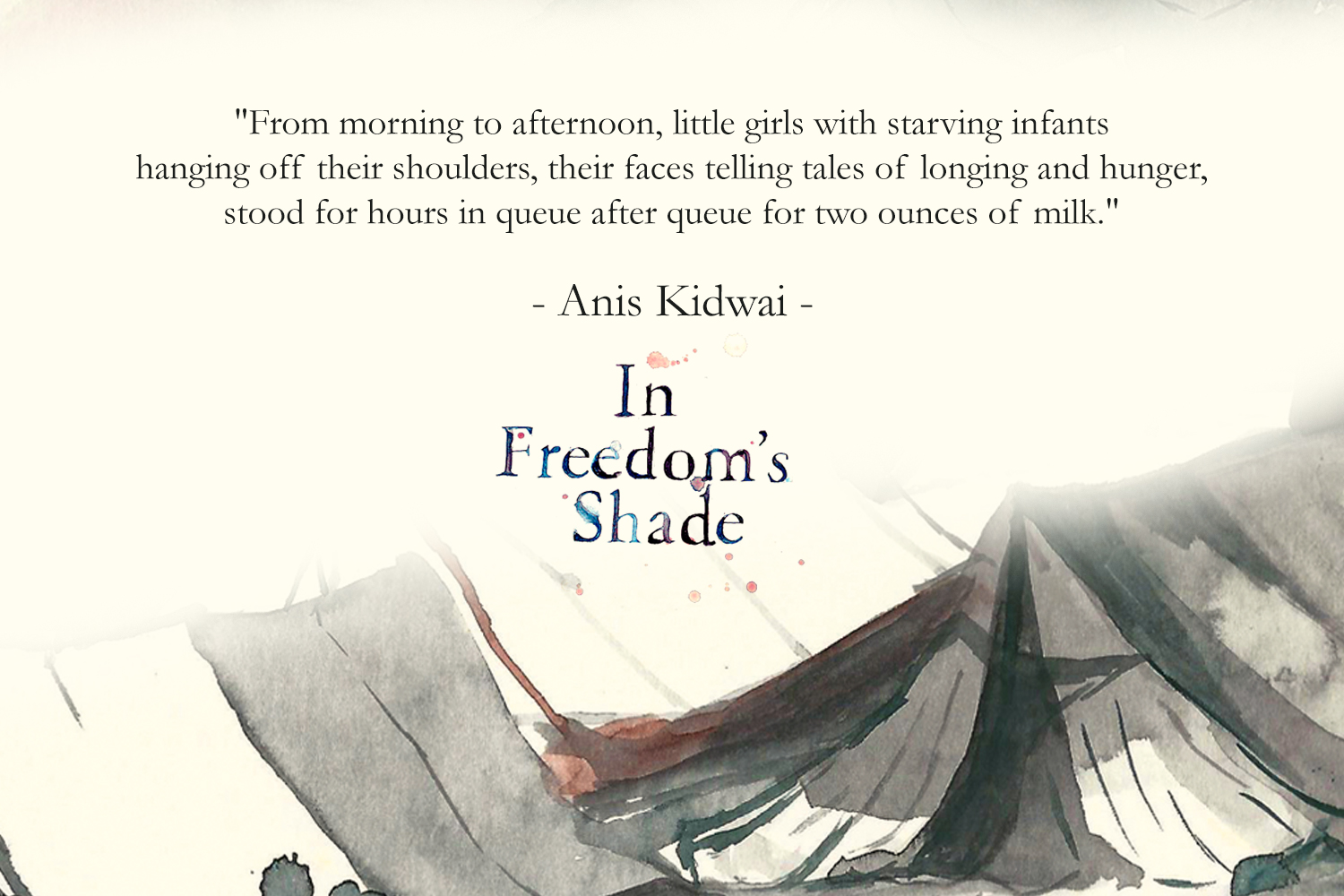
Pick up this collection and re-visit the heart-rending event.
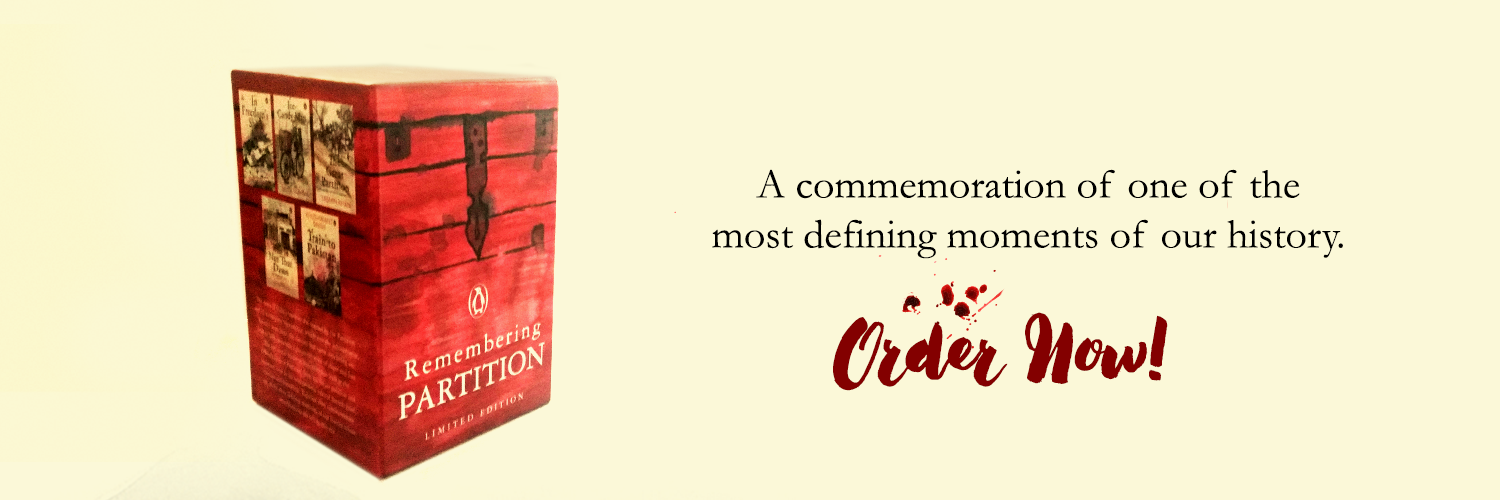
Subh-e-Azadi, An Anguished Evocation of the Pain of Partition
Faiz Ahmed Faiz is widely regarded as the greatest Urdu poet of the twentieth century and the iconic voice of a generation. He is best remembered for his revolutionary verses that decried tyranny and called for justice. In his poem, Subh-e-Azadi, he expressed the anguish and disappointment of Partition and the cost that the Indian subcontinent paid for freedom from the British rule.
Subh‐e Azadi
Yeh daagh daagh ujaalaa, yeh shab gazidaa seher
Woh intezaar tha jiska, yeh woh seher to nahin
Yeh woh seher to nahin, jis ki aarzoo lekar
Chale the yaar ki mil jaayegi kahin na kahin
Falak ke dasht mein taaron ki aakhri manzil
Kahin to hogaa shab-e-sust mauj ka saahil
Kahin to jaa ke rukegaa safinaa-e-gham-e-dil
Jawaan lahu ki pur-asraar shahraahon se
Chale jo yaar to daaman pe kitne haath pade
Dayaar-e-husn ki besabr kwaabgaahon se
Pukaarti rahi baahein, badan bulaate rahe
Bahut aziz thi lekin rukh-e-seher ki lagan
Bahut qareen tha haseenaa-e-noor ka daaman
Subuk subuk thi tamanna, dabi dabi thi thakan
Suna hai, ho bhi chukaa hai firaaq-e-zulmat-o-noor
Suna hai, ho bhi chukaa hai wisaal-e-manzil-o-gaam
Badal chukaa hai bahut ehl-e-dard ka dastoor
Nishaat-e-wasl halaal, o azaab-e-hijr haraam
Jigar ki aag, nazar ki umang, dil ki jalan
Kisi pe chaaraa-e-hijraan ka kuch asar hi nahin
Kahaan se aayi nigaar-e-sabaa, kidhar ko gayi
Abhi charaag-e-sar-e-raah ko kuch khabar hi nahin
Abhi garaani-e-shab mein kami nahin aayi
Najaat-e-deedaa-o-dil ki ghadi nahin aayi
Chale chalo ki woh manzil abhi nahin aayi
—Faiz Ahmed Faiz
The Dawn of Freedom, August 1947
This light, smeared and spotted, this night‐bitten dawn
This isn’t surely the dawn we waited for so eagerly
This isn’t surely the dawn with whose desire cradled in our hearts
We had set out, friends all, hoping
We should somewhere find the final destination
Of the stars in the forests of heaven
The slow‐rolling night must have a shore somewhere
The boat of the afflicted heart’s grieving will drop anchor somewhere
When, from the mysterious paths of youth’s hot blood
The young fellows moved out
Numerous were the hands that rose to clutch
the hems of their garments,
Open arms called, bodies entreated
From the impatient bedchambers of beauty—
But the yearning for the dawn’s face was too dear
The hem of the radiant beauty’s garment was very close
The load of desire wasn’t too heavy
Exhaustion lay somewhere on the margin
It’s said the darkness has been cleft from light already
It’s said the journeying feet have found union
with the destination
The protocols of those who held the pain in their
hearts have changed now
Joy of union—yes; agony of separation—forbidden!
The burning of the liver, the eyes’ eagerness, the heart’s grief
Remain unaffected by this cure for disunion’s pain;
From where did the beloved, the morning breeze come?
Where did it go?
The street‐lamp at the edge of the road has no notion yet
The weight of the night hasn’t lifted yet
The moment for the emancipation of the eyes
and the heart hasn’t come yet
Let’s go on, we haven’t reached the destination yet
—Translated by Baran Farooqui

7 Things You Did Not Know About MGR
Marudur Gopalan Ramachandran, or MGR was the founder of the AIADMK and three-time chief minister of Tamil Nadu. A Bharat Ratna recipient, he dominated the state’s stratosphere for four decades.
A brilliant new book by R. Kannan dissects MGR’s years in power: his early administration, the legendary midday meal scheme launched in 1982 that fed 92 lakh schoolchildren, his well-intentioned farm subsidies and freebies that strained the exchequer, his largesse to the Liberation Tigers of Tamil Eelam, as well as his unabashed sponsorship of liquor barons and private medical and engineering colleges that aided the transformation of the state, but also fueled corruption.
Here are seven things you did not know about the legendary actor-politician!
A Larger-than-life Figure

Innate Sense of Giving and Hospitality

Being His Own Man

He Was Considered an ‘Avatar’ of God

Watchful While Sitting Tall

The Spirit of Meting Out Judgement

Eye for detail

Looking for more? Get the story of India’s very first actor-politician here!

6 Times Our Prime Minister Surprised Us
Prime Ministers don’t always have to be serious, do they? India’s current Prime Minister Narendra Modi has often shown a side that reaches outside of his bureaucratic, stoic demeanour.
Here our 6 instances when Prime Minister Modi pleasantly surprised us:
Moshe, the 26/11 survivor met Narendra Modi with affection, on his recent visit to Israel.

When the Canadian and Indian PM talked about a sporty partnership.


When our PM broke protocol to hug a little girl.

When Ravi Shastri was bowled over by our PM.

When PM Modi became nostalgic.

PM Modi has a unique way of reaching out to his fans.


Tell us which instance surprised you the most.

The Story of India’s Very First Actor-Politician: An Excerpt
Marudur Gopalan Ramachandran, or MGR – founder of the AIADMK, three-time chief minister, and Bharat Ratna recipient – dominated Tamil Nadu’s stratosphere for four decades. In MGR: A Life – a richly detailed biography of the man often called vathiyar or teacher – R. Kannan traces MGR’s life from his early poverty-ridden years to his rise as a matinee idol, before becoming a politician of repute.
Here’s an excerpt from the book.
“I am overcome with shock and melancholy on hearing that my dear friend Dr MGR has passed away. Our friendship blossomed in 1945 with Jupiter Pictures’ Rajakumari, directed by A.S.A. Samy, in which he starred as the hero and I was the scriptwriter.
The memories of us staying in Coimbatore in the same house, exchanging views on politics and society, working together in the film world—our friendship maturing to the point of us serving in the same movement—cannot be forgotten and will forever remain green. Our comradeship in the film world would grow strong through our association in several films such as Abhimanyu, Marudhanaatu Ilavarasi, Mandhirikumari, Naam, Malaikallan, Kanchi Thalaivan, Engal Thangam, Pudhumaipithan and Arasilangkumari.
With that same sense of friendship, we were inseparable and as one in politics, up to 1972. We remained extremely friendly even in the aftermath of the changed political circumstances and through our differences.
[MGR] reigned as the unparalleled hero of Tamilagam’s (Tamil Nadu) film world. He created a new era in the film arena. Few had made the film world theirs as he did and conquered it the way he did. He has the honour of making his party, the ADMK he founded in 1972, rise to power in a short span of time. There is none who would not praise his resolute will to serve tirelessly—even through his two–three years of illness—during the ten years he served as chief minister. By his ceaseless hard work and not giving up, he shone, winning people’s affection.”
This is how Muthuvel Karunanidhi, popularly called Kalaignar, once MGR’s leader, and later bête noire and political antagonist, reacted to the death of Tamil Nadu’s chief minister Marudur Gopalan Ramachandran, or MGR.
J. Jayalalithaa, MGR’s protégé and political heir, said she wished to commit ‘sati’ now that MGR who ‘was everything to [her]’ was no more.
The matinee idol’s fans had always considered their puratchi thalaivar, and the founder of the All-India Anna Dravida Munnetra Kazhagam, as immortal both on screen and in real life. They could not even stand their hero being killed in movies, to the point where an otherwise promising film like Pasam (Affection, 1962) died at the box office.
However, on the morning of 24 December 1987, his devoted fans woke up to a harsh reality when their leader succumbed to a cardiac arrest—like any other mortal. Overcome by grief, thirty-one people committed suicide. For three years, MGR had been living on a transplanted kidney and with a speech impairment. Yet, his fans’ belief in his immortality is explicable. Twice, their god had cheated death: On 12 January 1969, screen villain Madras Rajagopal Radhakrishnan, aka M.R. Radha, shot MGR and then himself, and the second occasion, when MGR’s vitals failed on 5 October 1984. Even a few minutes delay would have been fatal, and yet he survived.
Fans were rapturous when in September 1967, in the aftermath of his brush with death, their hero was fittingly welcomed by heroine Jayalalithaa in Kavalkaran (Guard, 1967) when she sang, ‘Ninaithaen vandhaai, Nooru vayadhu (I thought of you and you showed up; you will live a hundred years)’—indicating the popular belief in MGR’s longevity. In 1970, MGR himself triumphantly sang, ‘Naan sethu pozhachavanda, Emaney paathu sirichavanda (I died and came back alive; I have mocked the god of death).’ The movie, Engal Thangam (Our Gold, 1970), featuring this song, was produced by Kalaignar’s nephew Murasoli Maran and featured Jayalalithaa opposite MGR.
In 1972, he broke away from his parent party, the Dravida Munnetra Kazhagam (DMK), accusing its leader and then chief minister, Kalaignar, of corruption. Named after his late mentor and the DMK’s founder, Conjeevaram Natarajan Annadurai (Anna), MGR’s AIADMK created history when it captured power in Tamil Nadu in 1977, only five years after its founding. To his followers, his rise meant that the meek had inherited the earth. Their leader’s success was theirs.
No actor or individual had ever possessed such a sway over Tamils in recent memory. In October 1984, as MGR, by then chief minister for a second time, fought for his life, twenty-two of his fans immolated themselves, unable to bear their hero’s suffering. Twenty more had unsuccessfully attempted suicide, only to escape with burn injuries. On 5 November 1984, an air ambulance flew MGR to Downstate Medical Centre, Brooklyn, New York.
MGR returned to Madras to a hero’s welcome on 4 February 1985. During all this time, not a day passed without radio and television stations airing the memorable song from Oli Vilakku (The Lit Lamp, 1968), his hundredth film.
Get R. Kannan’s riveting biography of MGR here!

6 Fascinating Political Strategy Pointers from a Gujarati Classic
K.M. Munshi was one of Gujarat’s most well-known literary writers. Munshi’s Glory of Patan, the first book in the epic trilogy is a landmark and bestselling classic in Gujarat. A mix of romance and politics, this fast-paced saga is sure to delight readers of historical fiction.
Here are six fascinating points of political strategy from the K. M. Munshi’s masterpiece.
Honour Comes First

One Kingdom, One Rule

Where Expediency Matters

Winning is Everything

Measured Tactics, Calculated Risks

Religion’s Nemesis

Get the bestselling epic about a key moment in Gujarat’s history here!

The Ups and Downs of Narendra Modi’s Governance
Uday Mahurkar in his latest book Marching with a Billion takes stock of Narendra Modi’s three years in power. Focusing on key areas of governance like infrastructure, foreign affairs, finance, digital technology, etc. Mahurkar showcases the work of the present government and the monumental changes the prime minister has brought about.
Here are ten highlights of Narendra Modi’s tenure:
Nearly 27 crore poor people opened their bank accounts under Narendra Modi’s Pradhan Mantri Jan-Dhan Yojana.

Uday Mahurkar points out that India has emerged as the number one global destination for FDI because of these two factors.

There have been disputes going on between investors and shipping ministry on account of the retrospective regulations slapped by the A.B. Vajpayee government fifteen years ago.

Uday Mahurkar notes that the relationship Modi is forging with the US, cutting across that country’s web of diplomatic calculations, is also new in the history of India’s diplomacy. The way Modi capitalized on India’s strength during his June 2016 US visit, which took the US Congress by storm and instilled the fear of isolation in the heart of Pakistan, and even China, left the world powers impressed.

Modi’s government is probably the first since Independence that has made a real attempt to involve the people in the process and, that too, quite successfully.

Modi, who has always been ahead of his times in adopting the latest technology, told the officials that he wanted to link people to digital technology like nowhere else in the world.

One big criticism of the government on reforms is what many people call its failure to disinvest big PSUs like Air India, SAIL and CIL. There is a view that taxation and banking reforms could have been faster. Mahurkar quotes a senior BJP leader with sound knowledge of the Indian economy who says: ‘What was needed was a transformational approach on reforms, but many steps indicate the government’s approach has been selectively incremental.’

Mahurkar observes that Modi’s China diplomacy signals a great change in India’s attitude towards that nation—from a defensive posture maintained over several decades to that of equal, controlled aggression. Modi gave another sign of India’s new stance soon after the G20 summit in the way he chose to react to the China–Philippines dispute in the South China Sea at the summit of the Association of Southeast Asian Nations at Laos.

According to Uday Mahurkar, the prime minister believes that the country has to overcome the urban–rural digital divide if it is to move forward.

Uday Mahurkar points out that there have been projects under Nitin Gadkari, Minister of Road Transport and Highways of India in Modi government, which have not taken-off yet.

Tell us what you think of Narendra Modi’s governance in the past three years.








